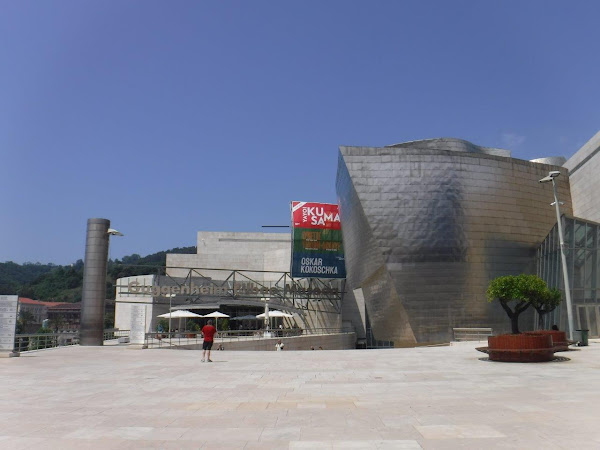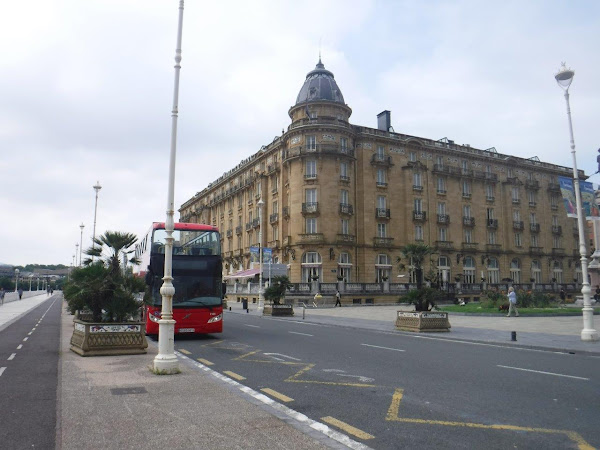The reason for my trip to Bilbao was solely to visit the renowned Guggenheim Museum. I had been aware of its existence even before embarking on the Camino de Santiago. I knew that during my journey, I would take a well-deserved break to explore this captivating museum. After visiting San Sebastian, it only made sense to travel to Bilbao, which was just a short bus ride away.
Upon arriving in Bilbao in the early afternoon, I wasted no time and promptly hopped on a tram from my centrally located hotel. The tram ride was short, covering a mere 7 stops, and brought me directly to the Guggenheim Museum.
As I made my way from the tram station to the museum, the architecture of the building left me in awe. Its unique style, striking color, and imposing presence against the backdrop of the clear blue sky impressed me greatly. Approaching the entrance, I was warmly greeted by the sight of the gigantic, whimsical flower-stuffed dog sculpture, which added to the museum's charm.
Inside the museum, I was captivated by the awe-inspiring architecture of the space. The spiral ramp leading to a magnificent domed skyline creates a sense of wonder and excitement that resonates with all visitors. Paired with the captivating contemporary artworks on display, the overall experience is truly thrilling and unforgettable.
The Guggenheim Museum Bilbao is a renowned contemporary art museum located in the city of Bilbao, in the Basque Country of northern Spain. It is one of the most iconic and influential architectural landmarks of the 20th century, designed by the renowned Canadian-American architect, Frank Gehry.
The Guggenheim Museum Bilbao opened its doors to the public on October 18, 1997. The building's architecture is a masterpiece of contemporary design, characterized by its striking, avant-garde, and futuristic appearance. Frank Gehry's design features flowing, curvilinear forms covered in titanium panels and limestone, which reflect light and change in appearance with the surrounding environment. The museum's unique design has earned it widespread acclaim and has become an architectural symbol for the city of Bilbao.
The museum is situated along the Nervion River in the heart of Bilbao's city center. Its waterfront location adds to the visual appeal of the building and has contributed to the revitalization of the surrounding area.
The Guggenheim Museum Bilbao is part of the Solomon R. Guggenheim Foundation, which also oversees the famous Guggenheim Museum in New York City. This museum focuses on modern and contemporary art, featuring an impressive collection of works by prominent artists from the mid-20th century to the present. The museum showcases a diverse range of art forms, including paintings, sculptures, photography, video art, and installations.
In addition to its permanent collection, the Guggenheim Museum Bilbao hosts temporary exhibitions that change periodically, featuring works from both renowned international artists and emerging talents. These exhibitions often attract art enthusiasts and tourists from around the world.






















































